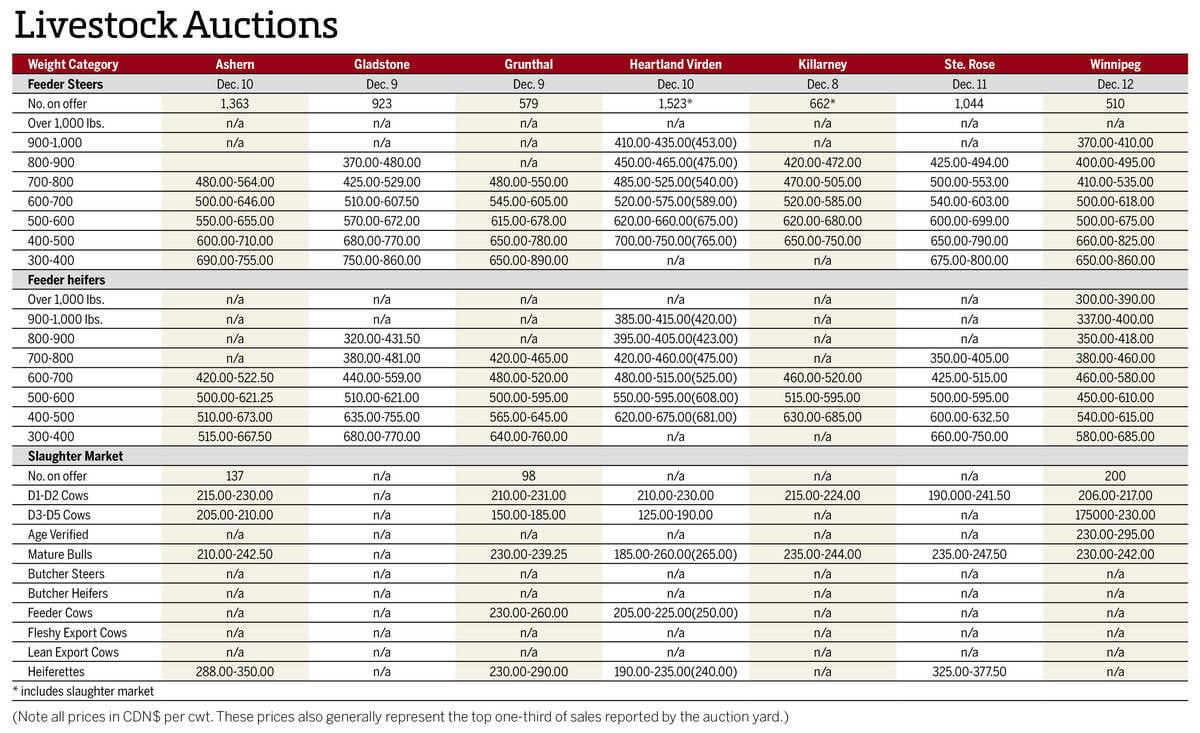There wasn’t much to prop up canola values on ICE futures over the shortened week of May 23. As of May 25, the two most actively traded contracts, old-crop July and new-crop November, fell back by $11.20 and $14.40 per tonne respectively.
That’s despite the former poking its head above the psychological level of $700/tonne from time to time. Otherwise canola remained firmly below that threshold.
With upswings in Chicago Board of Trade soybeans and soyoil, canola could have benefitted from those gains, but it did not. Soymeal was one impediment, having lost US$11.90/ ton during the week. Its July contract slipped below $400/ton, which added to its remarkable fall.
Read Also

Manitoba cattle prices Dec. 16
Here’s what local farmers were getting paid last week for their cattle at Manitoba livestock auction marts; prices covering the week Dec. 8-12, 2025.
The May supply and demand report from Agriculture and Agri-Food Canada might have been another possible inspiration for canola to rise, but it did not. While AAFC trimmed its call on 2023-24 production by 100,000 tonnes at 18.4 million, the department chopped its forecast for canola ending stocks by 43 per cent to 600,000 tonnes, giving us the likelihood of another year of tight stocks.
As one trader pointed out, speculative funds indulged themselves with canola crush margins in May. After pulling back from very supportive margins exceeding $170 per tonne above futures, the funds returned them to that range.
While not the record levels witnessed several months ago, margins were said to be too high once again. Even then, support the oilseed should have derived from those margins did not prop up futures prices.
Spring seeding continued across the Prairies, with farmers trying to catch up from a late start. Progress in Alberta was around 55 per cent as of May 16. The province is scheduled to release its next report after press time, so those farmers could be above the 70 per cent mark by then.
Manitoba issued its report on May 23, with 62 per cent of the crops in the ground. Saskatchewan followed two days later, pegging farmers there at 68 per cent done. That progress has been one factor in pushing canola prices down.
Now timely rains are needed on the Prairies to give canola and other crops a good start because dry conditions and drought still plague most of the region. Should absence of sufficient rain become a serious issue, it could be the main driver to hike canola prices.
















